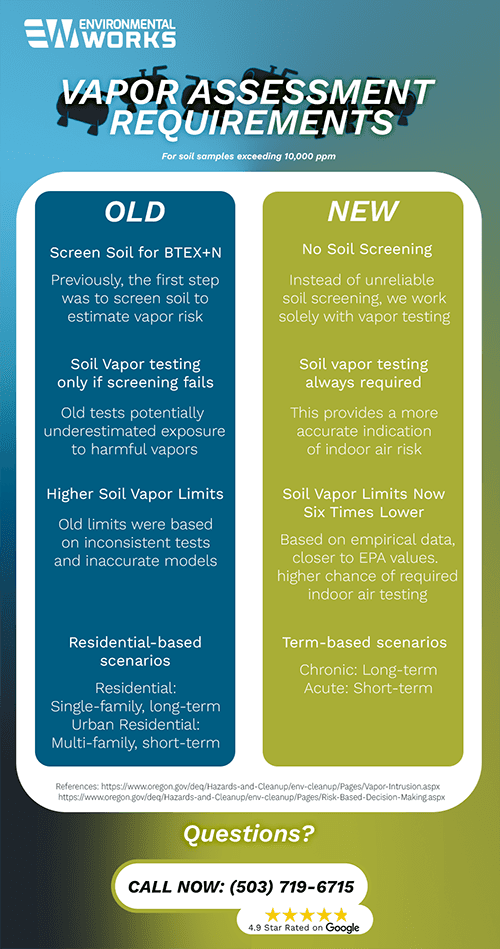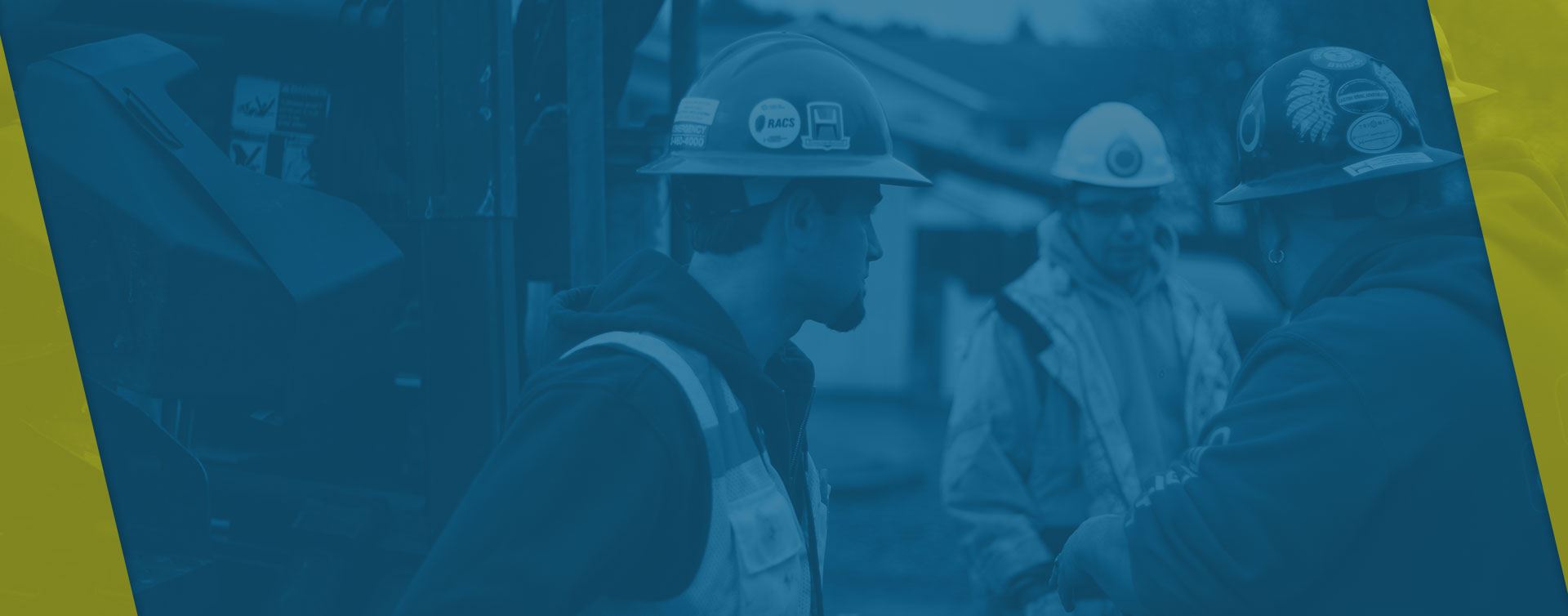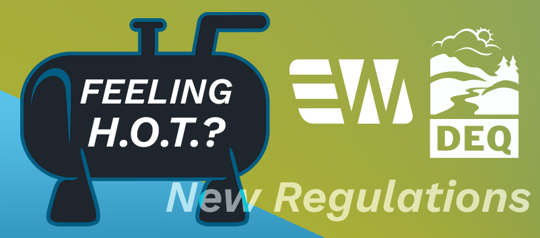Beginning June 1, 2023, the Oregon Department of Environmental Quality (DEQ) made their first substantial changes to the agency’s vapor intrusion guidelines in over a decade. Any site impacted by vapor intrusion, including Heating Oil Tank (HOT) and Underground Storage Tank (UST) sites, are required to follow these new guidelines.
These changes were enacted to reflect updated research, address concerns related to the protectiveness of screening methods, and improve the decision-making process at sites affected by vapor intrusion. These updates also bring Oregon more in line with other environmental agencies including those in Washington, California, and the EPA.
Currently, changes include eliminating volatile concentrations in soil as a screening method for vapor intrusion, requiring soil vapor or indoor air testing for all sites pursuing closure under Risk Based rules, emphasizing longer-term vapor sampling, and substantially lowering thresholds for volatile compounds in soil vapor. DEQ will continue to update their guidance document detailing other sampling requirements and methods through 2023 with input from the public and contractors.
A final version of their complete guidance document should be released by the middle of 2024.
Clients with significant contamination on their property will be impacted by these changes the most. The removal of soil screening and requiring soil vapor testing means an increased base cost for every project with significant contamination.
If volatile compounds exceed the new concentrations, then costs can increase further as additional testing, remediation, or mitigation will be required before a site can be closed. In cases where mitigation measures such as vapor extraction systems are utilized, deed restrictions will also need to be placed on the property.
Unsurprisingly, longer project timelines are expected as these sites undergo the additional testing, remediation, and mitigation necessary as a result of the stricter guidelines. Environmental Works is committed to minimizing additional costs and longer timelines. We will be following these changes as they are enacted and consulting with the DEQ to ensure all points of compliance are met as soon as possible.
References: https://www.oregon.gov/deq/Hazards-and-Cleanup/env-cleanup/Pages/Vapor-Intrusion.aspx
https://www.oregon.gov/deq/Hazards-and-Cleanup/env-cleanup/Pages/Risk-Based-Decision-Making.aspx


